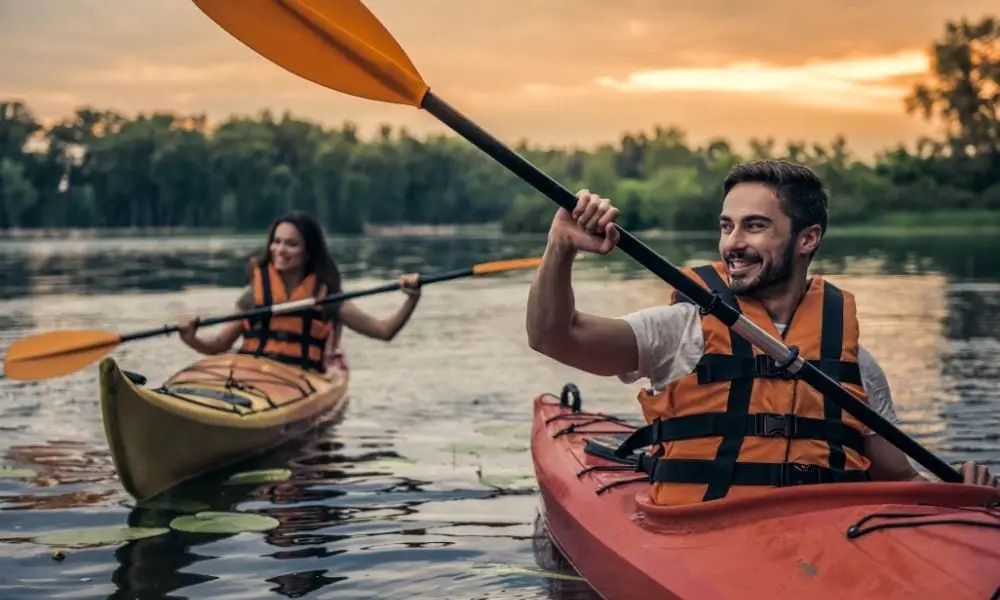

Water is undoubtedly the beating heart of the world. Modern human existence would be impossible without its presence. The study of biology tells us that water is one of the essential molecules necessary for life to survive. Even the most minuscule traces of this molecular compound indicate signs of life on Earth and beyond. More than a means of pure recreation, water is a source of nutritional sustenance and a model of efficient transportation.
The initial conquering of the watery world on a boat was not for mere fun but rather for utter survival. The most rudimentary forms of small boats for swift travel came about thousands of years ago in the form of canoes and kayaks. The designs and creations of these watercraft by Indigenous people would change human life for the better. To learn more about these singular-manned vessels, read on for a brief history of kayaking and kayaks.
Also called the “man’s boat” or “hunter’s boat,” the Inuit and Aleut tribes of the Arctic North American regions ingeniously created kayaks to travel strategically across icy waters. Back in the day, ancient designs utilized driftwood or whalebone to construct the boat’s frame. Animals skins were proficient structural coverings. These original kayaks were lightweight and agile but not incredibly durable.
Tribes of early kayaking pioneers utilized layers of contrived whale fat for water-proofing. For buoyancy, air-filled seal bladders did the trick to produce easy-to-control, stable vessels for hunting and fishing. These smaller transport vessels were ideal for sneaking up on prey in the water or along the shore.
Next up on a brief history of kayaking and kayaks, we’ll take a look at later happenstances that came about in the mid-19th century. As a practical and enjoyable activity, kayaking became known in other parts of the world for recreational and exploratory water skimming. A growing number of people took great interest in these soft-sided vessels, revolutionizing their use and interpretation.
Kayak racing soon became a sport appreciated by the general public. Included in the 1936 Olympic Games in Berlin, paddlers could now compete on a world stage. As more and more water enthusiasts admired the function and application of these double or single-manned crafts, modern progression opened up a wider world of kayaking possibilities.
The visible design diversification we see in modern kayaks is possible through the utilization of hardier and lighter construction materials. Fiberglass and carbon fiber became the mainstay materials from the 1950s onward, offering an equally lightweight and impact-resistant design. With more cost-effective production and enhanced performance, the kayak market thus opened to a wider audience of people.
Present-day innovation is ongoing in the kayaking world, such as through the use of kayak boat motors. These motor systems offer users valuable ease and performance. As a recent chapter in the history books, there is no telling the limit of these heavy-duty water vessels to provide thrilling experiences and lifelong memories.
Additional Resources:
Baseball
Basketball
A business can develop in many ways. One of the best ways to grow your…
American families are once again juggling the seasonal custom—and financial burden—of back-to-school shopping as the…
Want to bond over unexpected activities? Look at these unconventional ways to connect with your…
Burnout isn’t just something that happens to CEOs. For moms homeschooling littles, it’s a very…
When it comes to long-distance motorcycling, comfort, reliability, and smart engineering can make or break…
Flowers have seen significant transformation over time; online flower shopping is increasingly common now for…